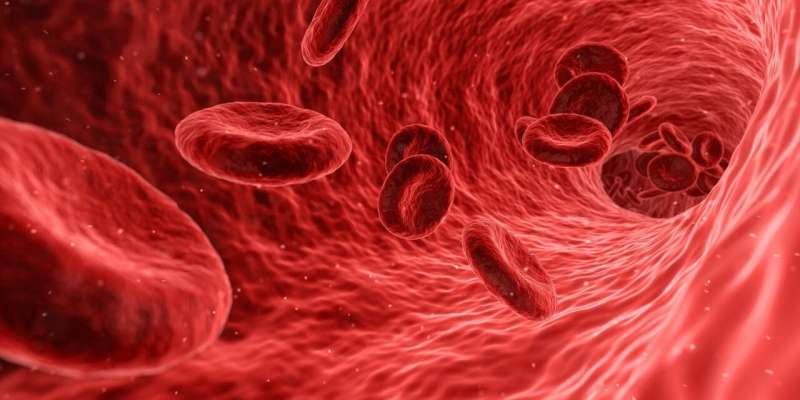by Albert Einstein College of Medicine

Credit: CC0 Public Domain
The hematopoietic (blood-forming) stem cells (HSCs) residing in our bone marrow produce all of our blood cells, including key immune cells that protect us from bacteria and viruses. As we age, our HSCs become less efficient and less able to make healthy new blood cells. In a study published online today in Nature, researchers at Albert Einstein College of Medicine have found that this reduction in HSC efficiency is caused in part by the deterioration of chaperone-mediated autophagy (CMA), the housekeeping process that removes damaged proteins and other waste materials that interfere with cells’ ability to function.
“While the aging of HSCs in our bone marrow is inevitable, the good news is that it may be reversible,” said co-study leader Ana Maria Cuervo, M.D., Ph.D., professor of developmental and molecular biology, of anatomy and structural biology, and of medicine, and the Robert and Renée Belfer Chair for the Study of Neurodegenerative Diseases at Einstein. “Our studies in mice suggest that drugs we’ve developed at Einstein can activate CMA and potentially restore the vitality of HSCs in older people.”
Helping Blood-Forming Stem Cells Stay Active
In previous studies, Dr. Cuervo discovered that the decline in CMA allows waste to build up in cells, contributing to Parkinson’s, Alzheimer’s, and aging in general, and that revving up CMA can help prevent those processes. The current study, with Shuxian Dong, Ph.D., as first author, investigates whether CMA’s age-related decline plays a role in the fall-off of HSC activity.
For the most recent research, Dr. Cuervo’s team first established that CMA in the HSCs of mice does indeed become less efficient with age. The researchers then showed that HSCs depend on CMA for their vitality—both to maintain a healthy balance of proteins and to switch from their normally quiescent state to their active, blood-cell forming state.
The team found that blocking CMA in the HSCs of young mice duplicates many of the features observed in the HSCs of aged mice. Conversely, young mice that were genetically engineered to prevent CMA in their HSCs from declining with age were able to repopulate bone marrow with healthy blood cells even into old age. “But even more interesting, when we pharmacologically activated CMA in old mice, we were able to restore their HSC activity,” said Dr. Cuervo.
Looking Ahead: Possibilities for Helping Human Health
“Although these studies were conducted in mice, the findings may have relevance to human health,” said co-study leader Britta Will, Ph.D., assistant professor of medicine and of cell biology. “HSCs from old people have the same defects we observed in mice in which CMA was blocked. When we took HSCs from people over 70 and treated them with the CMA activating drug developed with Evripidis Gavathiotis, Ph.D., also at Einstein, those HSCs recovered the ability to make healthy blood cells.”
Dr. Cuervo noted that some blood cancers such as acute myeloid leukemia and myelodysplastic syndromes overwhelmingly affect older people and evolve from mutations that accumulate in HSCs; revving up CMA in HSCs, she said, could help prevent those blood cancers from occurring. She also pointed out that this treatment approach might benefit cancer patients undergoing chemotherapy or radiation therapy, both of which destroy large quantities of blood cells and compromise the immune response.
The study is titled “Chaperone-mediated autophagy sustains hematopoietic stem cell function.”

Leave a Reply